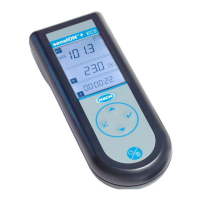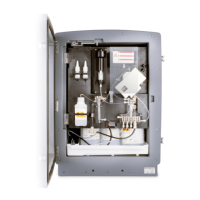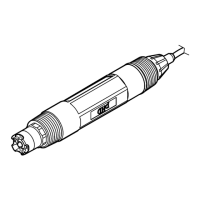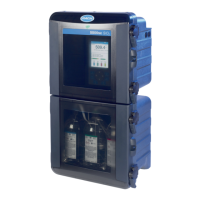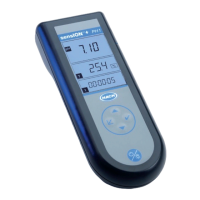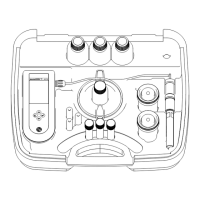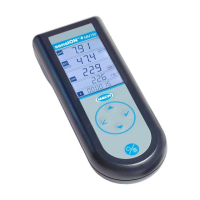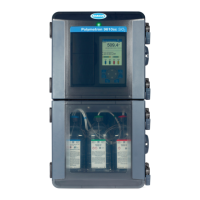SECTION 2, continued
27
Figure 9 Locating and Removing the Customer Access Cover
Hach recommends conduit for two reasons:
Note: If power cords are allowed by
local electrical code, a 125V
UL/CSA approved power cord with
an approved NEMA-style strain
relief and a standard 115V North
American-style plug (Hach Cat. No.
46306-00) or a 230V VDE-approved
power cord with an approved
NEMA-style strain relief and a
Continental European-style
plug (Hach Cat. No. 46308-00) can
be ordered.
1. It is generally required by most local electrical codes, and
2. Use of metal conduit can improve immunity to lightning surges and
AC power transients.
Additionally, electrical and instrumentation standards require a local means of
removing power from the product. The instrument is supplied with a
power on/off switch which is located inside the instrument enclosure.
To remove relay power from the instrument, an external customer-supplied
switch box or power cord may be installed. A power cord method is only
acceptable if local codes permit its use and the considerations outlined in the
previous paragraphs are addressed.
In hard-wired electrical applications the power and safety ground service drops
for the instrument should be no longer than 6 meters (20 feet) unless metal conduit
is used to shield the AC power wiring. The wire should be 18 to 12 AWG.
In applications where power cords are allowed by local electrical codes and power
surges and transients are not a great concern, an 18 gauge, 3-conductor power cord
(including a safety ground wire) can be used, but its length must not exceed
3 meters (10 feet). See Figure 10B.
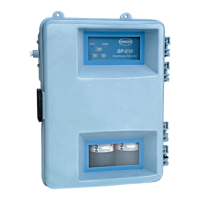
